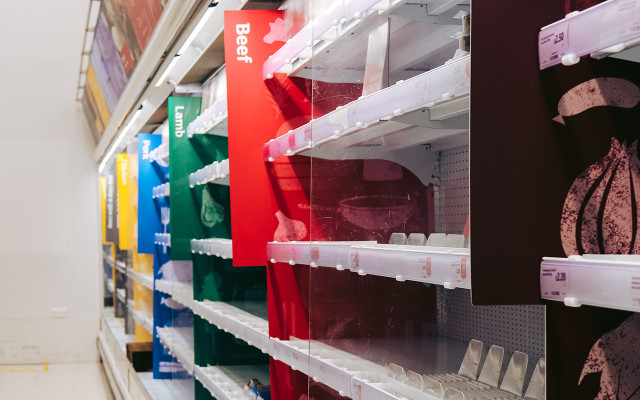There are plenty of ways to reduce your carbon footprint without compromising on comfort or convenience. Here are some simple and effective tips – plus a helpful carbon footprint definition.
The carbon footprint measures the total greenhouse gas emissions a particular person is responsible for over a certain period of time. Knowing this definition, we can gauge the size of our own carbon footprint by reflecting on our typical patterns of consumption. Combined with the insight gained from our score on a carbon footprint calculator (see below), this should begin to shed light on the best ways to reduce our carbon footprint.
In this article, we’ll show you the most common sources of personal and household carbon emissions, what the most common culprits are, and where our values should be. We’ll also show you multiple ways you can reduce your own carbon footprint with small changes to your everyday routine. For a detailed carbon footprint definition, scroll down towards the end of this article.
Carbon Footprint: Common Sources of Emissions

When it comes to identifying the best ways to reduce your own household’s carbon footprint, the first step is to consider the most common culprits of excess emissions. The primary sources of carbon emissions are food, household emissions, and personal transportation.
Food makes up 10-30% of a household’s carbon footprint and more than two thirds of food emissions result from the production process alone. Particularly high-emission foods include meat and dairy. In other words, these food groups cause more pollution per calorie than grains or vegetables.
Household emissions are the next major group of carbon emissions contributors. These include residential electricity use as well as space heating and cooling. Experts estimate the latter will account for approximately 44% of energy use in U.S. homes in 2020. Among the other heavy emitters at home, refrigerators are by far the largest users of household energy.
Personal transportation is another area where many of us will easily find ways to reduce our carbon footprint. America is a nation of car owners, and approximately 67.6% of the civilian population over the age of 15 drives on a daily basis. Out of the total greenhouse gases from transportation emitted in 2018, 41% were from passenger cars.
Although public transportation isn’t all too reliable across the board in the United States, there are ways to reduce our own individual carbon footprint when it comes to transport.
Utopia’s Tip: 12 Practical Tips for Minimalist Living: Make Your Life Easier
The Ideal Carbon Footprint



According to the University of Michigan, the average U.S. household is responsible for a carbon footprint of 48 metric tons of CO2e per year – or around 16 tons per person, one of the highest rates in the world. To put this value into perspective: While the United States makes up only 4.5% of the world’s population, it’s responsible for a 15.6% share of the world’s carbon footprint. This is a clear sign that there is work to be done.
If we want to stop further contributing to global warming and avoid the critical 2℃ rise in global temperature, we will have to lower this average yearly carbon footprint to 2 tons per person per year.
We’re less than likely to manage such a drastic drop in average emissions overnight. However, informed consumer decision making and sustainable everyday actions will help make a lasting difference over time.
Easy Ways to Reduce Your Impact: Buy Local, Eat Fresh



Especially when it comes to food, there are numerous ways to reduce your carbon footprint:
- Buy locally produced foods instead of products shipped in from out of state or even overseas.
- Buy fresh rather than processed products. Processed foods require more energy and therefore also emit more CO2.
- Eat fewer animal products. These cause the greatest amount of emissions. Butter, cheese, and beef are among the worst for the climate. Going vegetarian or even vegan is one way to reduce one’s carbon footprint, however, switching to less carbon-intensive meats can also have an impact.
- Buy fruits and vegetables in-season. Greenhouses, cold storage facilities, and refrigerated trucks drive the total emissions sky high due to the energy requirements during production and transportation.
- Reduce food waste. Food waste is a serious problem. It is thought that one-third of all food produced globally is wasted. Simple solutions to food waste are proper fridge temperature and organization, proper planning and meal prep, as well as putting every bit of your food to use, such as vegetable scraps.
Utopia’s Tip: The non-profit organization Foodprint has compiled a comprehensive guide on the sustainability of specific foods. Eco-friendly eating is only one of the various stept to reducing your carbon footprint at home. Be sure to check out Utopia’s tips on how to keep a zero waste kitchen.
Ways to Reduce Your Carbon Footprint at Home



Here are some clever ways to reduce your carbon footprint at home:
- When baking, preheating the oven is rarely necessary. Depending on what exactly you’re baking, skipping this step is one of many great steps to reducing your carbon footprint in the kitchen.
- Correctly adjust your thermostat settings for winter and you can reduce your carbon footprint while saving money on heating. According to the U.S. Department of Energy, Americans can save up to ten percent a year on heating and cooling simply by adjusting thermostats back 7-10°F for eight hours a day.
- When it comes to conserving energy at home, there are endless ways to save electricity and reduce your carbon footprint. Turn off your phone, unplug any devices you’re not using or make the sustainable switch to energy-saving appliances.
- Hot water conservation will also help reduce your carbon footprint at home. Hot water has the second-largest energy demand in modern households, making up nearly 18% of total energy usage or up to around $400-600 per year. Switching to a cold water wash once a week can also reduce greenhouse gas emissions by over 70 lbs anually.
- When it comes to finding the best ways to reduce our carbon footprint, our bathroom often gets overlooked. Many are filled with disposable products and lots of plastic. The good news: it doesn’t take much effort to switch to waste-free alternatives, such as a zero waste toothpaste. Here are some simple tips for your zero waste bathroom.
More Sustainable Tips on How to Reduce Your Environmental Impact



Thinking about traveling? How about instead of flying or traveling long distances, you spend your time off locally with a staycation? Enjoy everything you love about a vacation without the stress and environmental destruction that travel can cause. If you do end up taking a road trip, remember to travel green.
Here are some tips: Zero Waste Travel: Green Living On The Road
And when it comes to the holidays, there are loads of ways to celebrate sustainably and reduce your carbon footprint without having to compromise on tradition. One such way to make holidays more sustainable is to celebrate a Green Thanksgiving. This eco-friendly take on America’s most cherished feast involves nothing more than making simple changes to your holiday routine.
Fast forward a couple of weeks and we’ve reached the next big day of excess – Christmas. How about a break from all the consumption chaos and stress this time around? Here’s how to celebrate a merry minimalist Christmas, sustainable and stress-free like the holidays should be.
Carbon Footprint: Definition



The University of Michigan’s Center for Sustainable System’s Carbon Footprint Factsheet defines carbon footprint as the “total greenhouse gas (GHG) emissions caused directly and indirectly by an individual, organization, event or product.” Scientists make the calculation by totaling the emissions over a product or service’s entire lifetime – from material production, manufacturing, and use to end-of-life.
Even though the carbon footprint definition is pretty clear, the term “carbon” footprint itself may turn out to be somewhat misleading at first glance. This metric for pollution includes not only carbon emissions (CO2) but also other harmful greenhouse gases such as methane (CH4) and nitrous oxide (N2O). The sum of climate impact is expressed in global warming potential (GWP) in their carbon dioxide equivalents (CO2e) in order to provide a common unit of comparison.
On the individual level, a small carbon footprint essentially means you’re personally responsible for only a small amount of CO2 (and other) emissions. A large footprint, on the other hand, shows that your consumption habits are less than sustainable.
However environmentally impactful our particular lifestyles may be, we surely all have ways we can improve our consumption habits to reduce our carbon footprint.
How to Calculate Your Personal Carbon Footprint



One of the best ways to estimate and reduce your own environmental impact is to run the numbers in a carbon footprint calculator. Your result will show you how you compare with the average and where there’s room for improvement. See for yourself with these interactive carbon footprint calculators:
- Nature Conservancy’s Interactive Carbon Footprint Calculator
- U.S. Environmental Protection Agency’s Household Carbon Footprint Calculator
- Conservation International – Carbon Footprint Calculator
By Evan Binford
** Links to retailers marked with ** or underlined orange are partially partner links: If you buy here, you actively support Utopia.org, because we will receive a small part of the sales proceeds. More info.Do you like this post?









